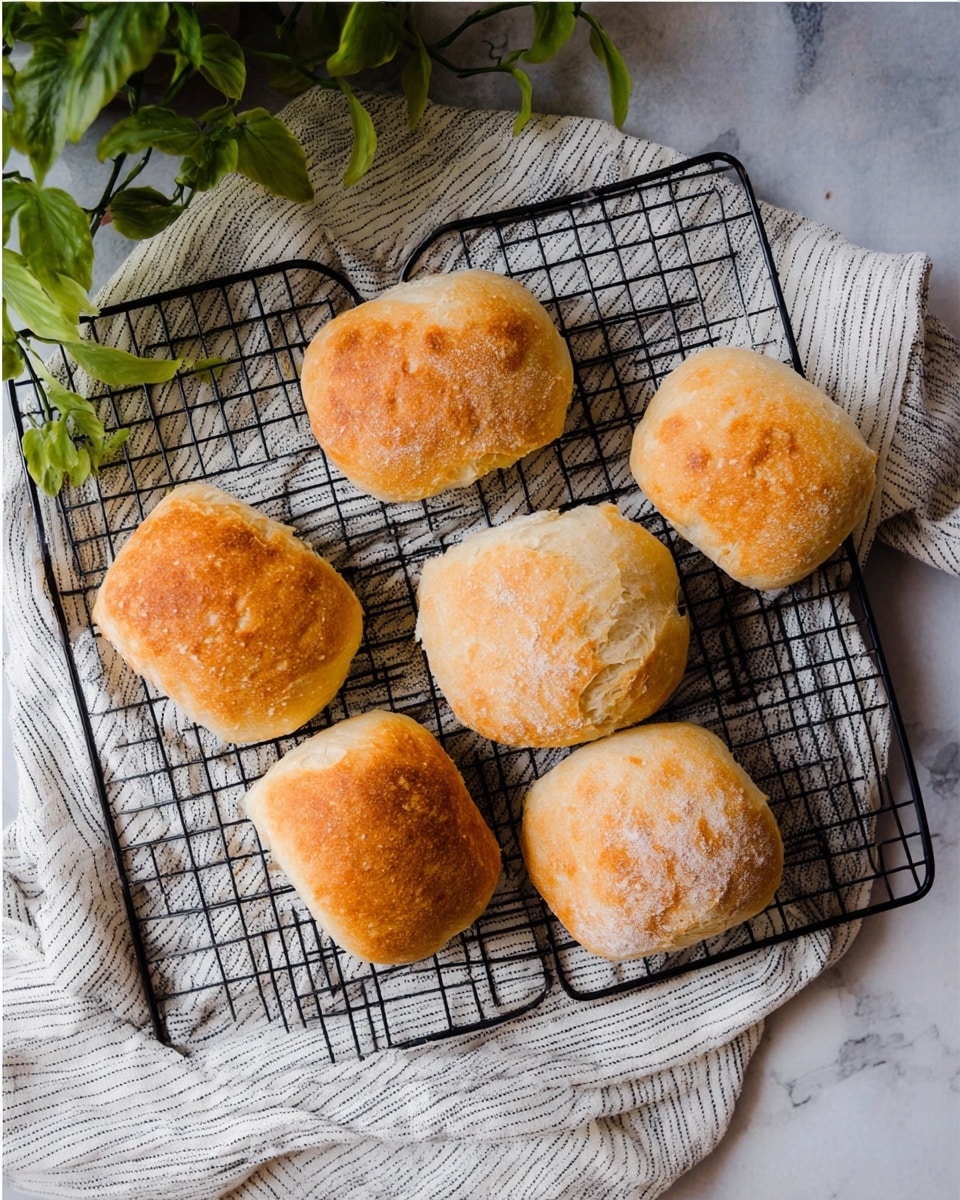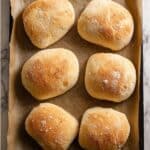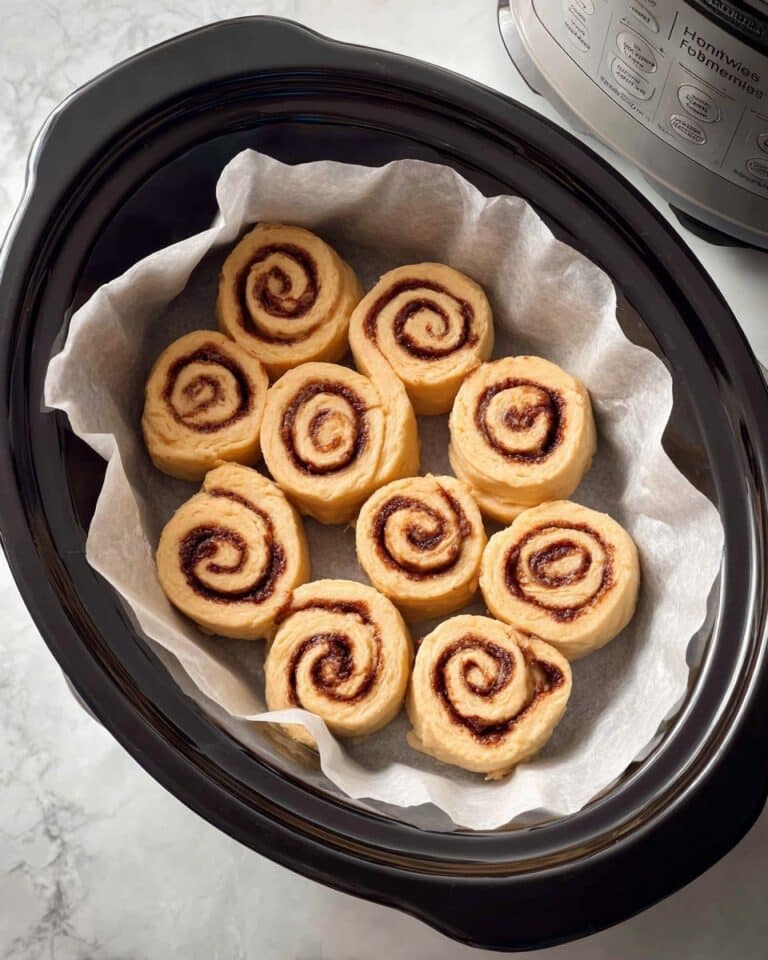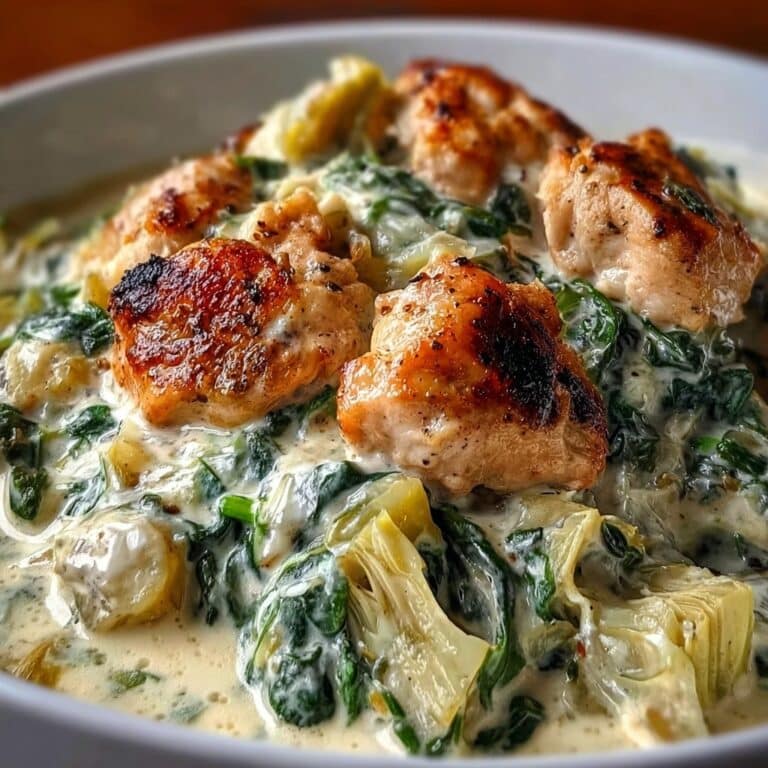Homemade Ciabatta Rolls Recipe
Introduction
These homemade ciabatta rolls are light, airy, and perfect for sandwiches or as a side to your favorite meal. With a crisp crust and tender crumb, they bring authentic Italian bakery flavors right to your kitchen.

Ingredients
- 3 cups bread flour
- 1/2 Tbsp sea salt
- 1 1/2 cups hot water
- 1 packet Active Dry Yeast (about 2 1/4 teaspoons)
- 2 Tbsp extra virgin olive oil
Instructions
- Step 1: Combine the bread flour and salt in a large bowl and whisk together until well combined.
- Step 2: Measure the hot water and let it rest for a minute or two. Add the yeast and whisk gently (use a separate whisk from the one used for flour).
- Step 3: Let the yeast mixture sit for 30 seconds to 1 minute, then pour it over the flour mixture. Gently combine with a spatula until a shaggy dough forms.
- Step 4: Add the extra virgin olive oil and fold it into the dough carefully, avoiding pressing down directly on the dough.
- Step 5: Cover the bowl with a kitchen towel and let the dough rest in a warm spot away from direct sunlight for 1 hour and 30 minutes.
- Step 6: Uncover the dough and gently lift it from the bottom, folding it over the top. Repeat this folding four times around the dough. Let it rest for 30 minutes.
- Step 7: Repeat the folding and resting process two more times, for a total of three 30-minute resting periods.
- Step 8: Lightly flour a piece of parchment paper and roll the dough out of the bowl. Gently stretch it from the bottom into a rectangular shape without kneading or pulling from the top to maintain air bubbles.
- Step 9: Cut the dough lengthwise and then into individual rolls (6–8 depending on desired size) using a dough cutter. Gently separate the rolls from the bottom.
- Step 10: Transfer the parchment paper with rolls onto a baking sheet, cover loosely, and let rest for 30–50 minutes. Preheat the oven to 420°F and place a rimmed baking sheet on the rack below.
- Step 11: Remove the towel and spray the tops of the rolls with water. Place the rolls in the oven. Pour about 1/2 cup water into the rimmed baking sheet below to create steam. Bake for 20–25 minutes.
- Step 12: Remove the rolls from the oven and allow them to rest for 1 hour before serving to develop their full flavor and texture.
Tips & Variations
- Using bread flour enhances the structure and chewiness of the rolls.
- Maintain gentle handling of the dough to preserve air bubbles for a light crumb.
- For a flavored variation, add herbs like rosemary or thyme when combining the flour and salt.
Storage
Store cooled ciabatta rolls in an airtight container or bread bag at room temperature for up to 2 days. To keep longer, freeze the rolls wrapped in foil or plastic wrap for up to a month. Reheat by warming in a 350°F oven for 5–10 minutes to restore crust crispness.
How to Serve

Serve this delicious recipe with your favorite sides.
FAQs
Can I use all-purpose flour instead of bread flour?
Yes, you can substitute all-purpose flour, but your rolls may be slightly less chewy and have a softer crust.
Why do I need to add water to the baking sheet during baking?
Adding water creates steam in the oven, which helps develop a crisp crust and allows the rolls to expand properly during baking.
PrintHomemade Ciabatta Rolls Recipe
These Homemade Ciabatta Rolls feature a light, airy crumb with a crisp crust, perfect for sandwiches or as a side to your favorite meals. Made from simple ingredients and using a no-knead folding technique, this recipe produces authentic Italian-style ciabatta rolls with minimal effort and maximum flavor.
- Prep Time: 20 minutes
- Cook Time: 25 minutes
- Total Time: 3 hours 45 minutes
- Yield: 6–8 ciabatta rolls 1x
- Category: Bread
- Method: Baking
- Cuisine: Italian
Ingredients
Dry Ingredients
- 3 cups bread flour
- 1/2 Tbsp sea salt
- 1 packet (2 1/4 tsp) active dry yeast
Wet Ingredients
- 1 1/2 cups hot water
- 2 Tbsp extra virgin olive oil
Instructions
- Mix Dry Ingredients: Combine the bread flour and sea salt in a large bowl and whisk them together thoroughly until well blended.
- Activate Yeast: Measure the hot water and let it rest briefly, then whisk in the active dry yeast. Allow it to sit for 30 seconds to 1 minute until it becomes slightly foamy.
- Combine Wet and Dry: Pour the yeast mixture over the flour mixture and gently mix with a spatula until a shaggy dough forms.
- Add Olive Oil: Fold in the extra virgin olive oil gently without pressing down on the dough to retain the air pockets.
- First Rise: Cover the bowl with a kitchen towel and let the dough rest in a warm, draft-free spot for 1 hour and 30 minutes.
- Fold Dough: Uncover the dough and gently stretch it from the bottom, folding over the top, repeating four times around the dough. Let rest for 30 minutes.
- Repeat Folding: Fold and rest the dough two more times, for a total of three 30-minute resting periods.
- Shape Dough: Lightly flour parchment paper and gently roll the dough out of the bowl. Stretch it from the bottom into a rectangle shape without kneading or pulling from the top.
- Cut Rolls: Using a dough cutter, slice the dough lengthwise and then into individual rolls, getting 6 to 8 rolls depending on size. Pull the rolls apart gently from the bottom.
- Second Rise: Transfer the rolls on the parchment to a baking sheet. Cover and let them rest for 30 to 50 minutes. Meanwhile, preheat oven to 420°F (215°C) and place a rimmed baking sheet on the rack below.
- Bake: Just before baking, spray the tops of the rolls with water. Put the rolls in the oven, add about 1/2 cup of water to the rimmed baking sheet to create steam, and bake for 20 to 25 minutes until golden and crisp.
- Cool: Remove rolls from oven and let them rest on a wire rack for 1 hour before slicing or serving.
Notes
- Use bread flour for best gluten development and texture.
- Do not knead the dough vigorously; use gentle folding to maintain air bubbles.
- Ensure the water used for activating yeast is hot but not boiling (around 110°F or 43°C).
- Adding water to the baking sheet creates steam, essential for a crusty exterior.
- Resting the rolls after baking helps finish the baking process and improves texture.
- Store leftover rolls in an airtight container to maintain freshness.
Keywords: Ciabatta rolls, homemade bread, Italian bread, no-knead bread, crusty rolls, olive oil bread








